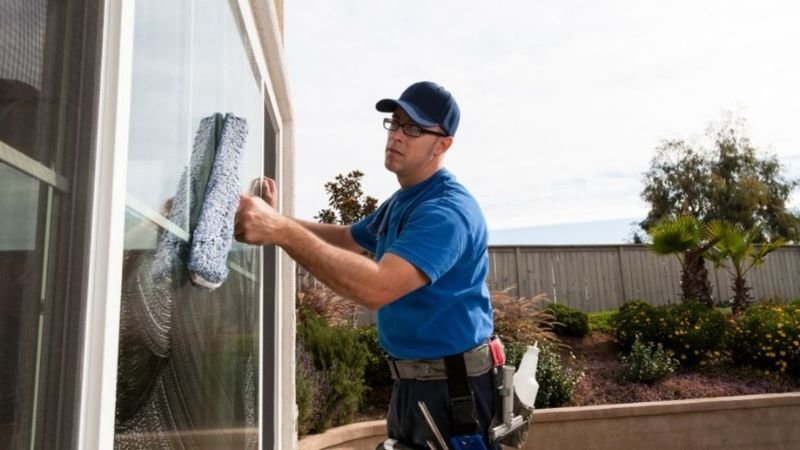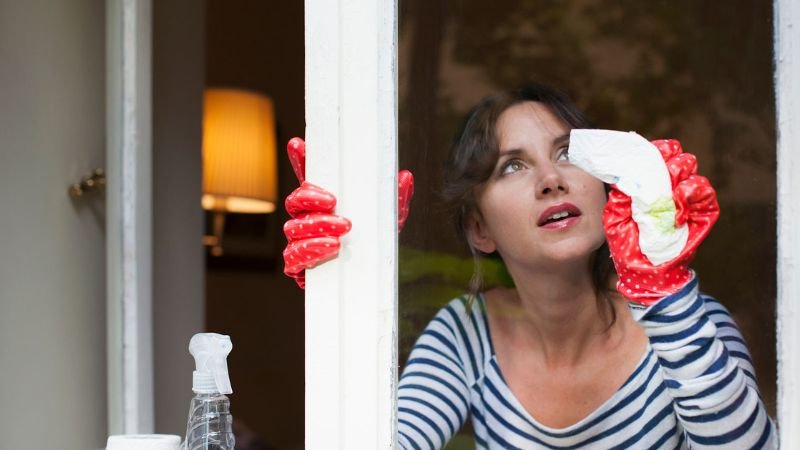Are you looking for 9 DIY Window Washing Tips For Homeowners? If yes, then you are at right blog. Keeping your windows sparkling clean can transform the look and feel of your home, bringing in more natural light and enhancing your views. While professional window cleaning services are available, doing it yourself can be a cost-effective and satisfying option.
In this blog, we’ll share nine practical DIY window washing tips that will help homeowners achieve a streak-free shine without breaking the bank. From choosing the right tools and techniques to tackling tough grime and water spots, our tips will equip you with everything you need for crystal-clear windows. So, grab your cleaning supplies and let’s get started on making your windows gleam like never before!
DIY Window Washing Tips For Homeowners
1. Choose the Right Tools
To achieve a professional-level clean, you’ll need the right tools. Invest in a good squeegee, a window scrubber or sponge, and a microfiber cloth for a streak-free finish. A bucket, dish soap, and white vinegar are also essential. The squeegee is key to avoiding streaks; choose one with a rubber blade that is still flexible. A high-quality scrubber or sponge will help remove stubborn dirt and grime without scratching the glass.
Microfiber cloths are excellent for drying and polishing because they don’t leave lint behind. Additionally, having a ladder or an extension pole can be helpful for reaching high windows. By assembling the proper tools, you’ll set yourself up for success and make the window washing process much more efficient. This is the first tip out of 9 DIY Window Washing Tips For Homeowners.
2. Make Your Own Cleaning Solution
Commercial window cleaners can be expensive and filled with chemicals. A great alternative is to make your own cleaning solution using household ingredients. Mix one part white vinegar with two parts water and add a few drops of dish soap. This mixture effectively cuts through grease and grime while leaving a streak-free finish. For extra tough spots, you can add a bit of rubbing alcohol to the mix.
Pour your solution into a spray bottle for easy application. This homemade cleaner is not only cost-effective but also environmentally friendly. It’s gentle enough for regular use, yet strong enough to tackle the most stubborn dirt and residue. Plus, you’ll have peace of mind knowing exactly what’s in your cleaning solution. This is the second tip out of 9 DIY Window Washing Tips For Homeowners.
3. Start with Dusting
Before you start washing your windows, it’s important to remove any dust and loose dirt. Use a dry microfiber cloth or a vacuum with a brush attachment to clean the window frames, sills, and screens. This step prevents dirt from turning into a muddy mess when it gets wet. Pay extra attention to the corners and edges where dust tends to accumulate. If your windows have screens, remove them and rinse with water before reinstalling.
Starting with a dust-free surface ensures that your cleaning solution can work more effectively, resulting in a cleaner, clearer window. This initial dusting step is crucial for a thorough cleaning and helps you avoid scratching the glass with abrasive particles. This is the third tip out of 9 DIY Window Washing Tips For Homeowners.
4. Use the Right Technique
Proper technique is key to achieving streak-free windows. Start by spraying your cleaning solution generously onto the window. Using a scrubber or sponge, work the solution into the glass in a circular motion to break up dirt and grime. Next, take your squeegee and position it at the top corner of the window. Pull it down in a straight line, wiping the blade with a microfiber cloth after each pass.
For large windows, work in sections to ensure thorough cleaning. Always overlap each stroke slightly to avoid leaving streaks. If you notice any drips or streaks, immediately wipe them away with a clean, dry microfiber cloth. Mastering this technique will ensure your windows are crystal clear every time. This is the fourth tip out of 9 DIY Window Washing Tips For Homeowners.
5. Don’t Forget the Frames and Sills
While the glass often gets all the attention, it’s important not to neglect the frames and sills. These areas can collect a lot of dirt, dust, and even mold. Use your cleaning solution and a soft brush or cloth to scrub the frames and sills thoroughly. Pay special attention to the corners and crevices where dirt tends to build up. For tough grime, a toothbrush can be very effective.
Rinse with clean water and dry with a microfiber cloth to prevent water spots and mold growth. Regularly cleaning these areas not only enhances the overall appearance of your windows but also helps to maintain the structural integrity of the window frames and prolongs their lifespan. This is the fifth tip out of 9 DIY Window Washing Tips For Homeowners.
6. Tackle Tough Stains
Some windows might have stubborn stains from hard water, bird droppings, or other contaminants. For these tough spots, you can use a mixture of baking soda and water to create a paste. Apply the paste to the stained area and let it sit for a few minutes before scrubbing gently with a sponge or cloth.
For mineral deposits or hard water stains, try using a bit of lemon juice or vinegar directly on the stain. Be sure to rinse the area well with water afterwards to remove any residue. Persistent stains may require repeated applications, but with patience and the right approach, you can restore your windows to their original clarity.
7. Dry Quickly and Thoroughly
One of the secrets to streak-free windows is drying them quickly and thoroughly. After using your squeegee, immediately wipe any remaining water with a clean, dry microfiber cloth. Pay special attention to the edges and corners where water tends to accumulate. If water is left to air dry, it can leave spots and streaks on the glass.
For a final polish, use a dry microfiber cloth to buff the glass in a circular motion. This will ensure that all moisture is removed and that your windows have a sparkling finish. Quick and thorough drying is essential for maintaining the clarity and shine of your windows.
8. Clean on a Cloudy Day
Believe it or not, the weather can impact your window cleaning results. Cleaning your windows on a sunny day might seem ideal, but the heat can cause your cleaning solution to dry too quickly, leaving streaks and spots. Instead, choose a cloudy day or clean your windows early in the morning or late in the evening when the sun is not as intense.
This allows you more time to work with the cleaning solution before it dries, ensuring a streak-free finish. Additionally, cooler temperatures are more comfortable to work in, making the task more enjoyable and less rushed.
9. Maintain Regular Cleaning
Regular maintenance is key to keeping your windows looking their best. Aim to clean your windows at least twice a year, or more frequently if you live in an area with a lot of dust, pollen, or pollution. Establishing a regular cleaning schedule prevents dirt and grime from building up and makes each cleaning session easier and quicker.
Additionally, regularly cleaning your windows allows you to spot any potential issues, such as cracks or leaks, early on. Consistent maintenance not only enhances the appearance of your home but also helps extend the lifespan of your windows. This is the last but not least tip out of 9 DIY Window Washing Tips For Homeowners.
Conclusion
Clean windows can significantly improve the ambiance and appearance of your home. With these nine DIY window washing tips, you now have the knowledge and tools to achieve professional-level results without the associated costs. Remember, the key to spotless windows lies in using the right materials, following the correct techniques, and maintaining a regular cleaning schedule.
Whether you’re preparing for a special occasion or just want to enjoy unobstructed views, these tips will help you keep your windows looking their best. So, next time you notice a smudge or streak, you’ll know exactly what to do. We hope this blog has cleared all your queries about 9 DIY Window Washing Tips For Homeowners, Happy cleaning!
FAQs
How often should I clean my windows?
It’s recommended to clean your windows at least twice a year, but depending on your location and environment, you might need to do it more frequently. Homes near the coast, in urban areas, or with lots of trees may accumulate dirt and debris faster.
Can I use regular household cleaners for my windows?
While some household cleaners can be effective, it’s best to use a cleaner specifically formulated for windows or make a DIY solution with water, vinegar, and a bit of dish soap. This ensures a streak-free finish and avoids potential damage to your window surfaces.



